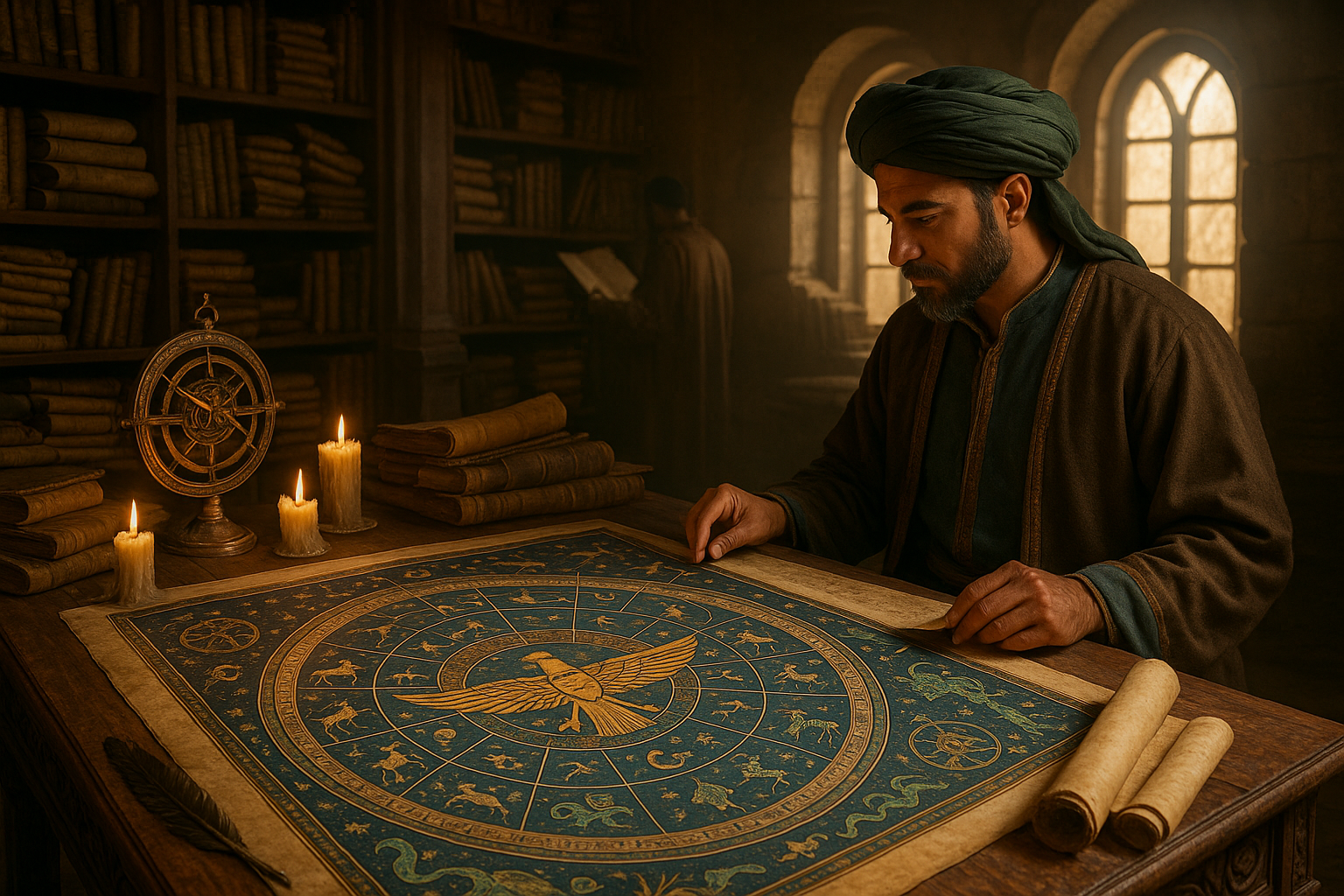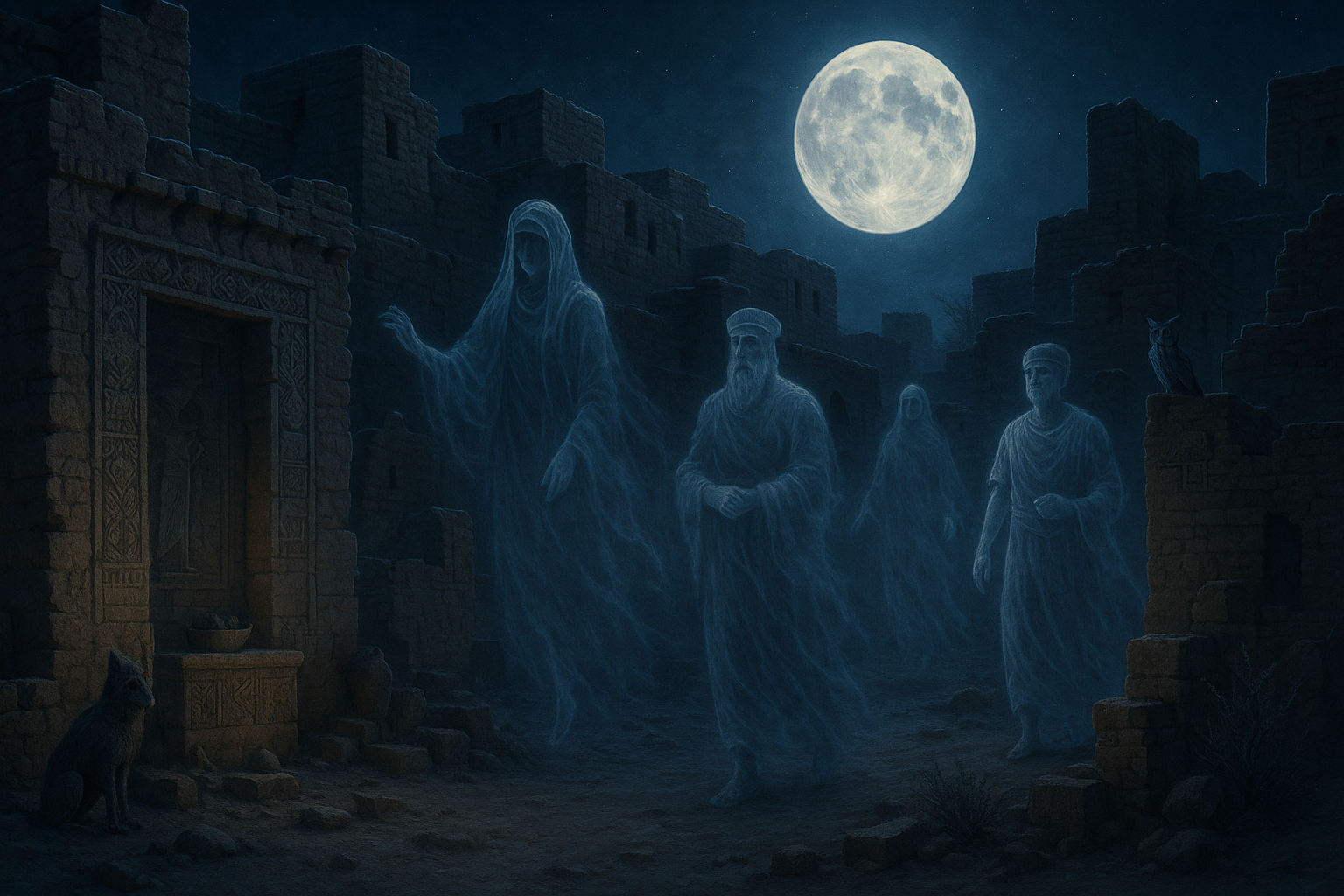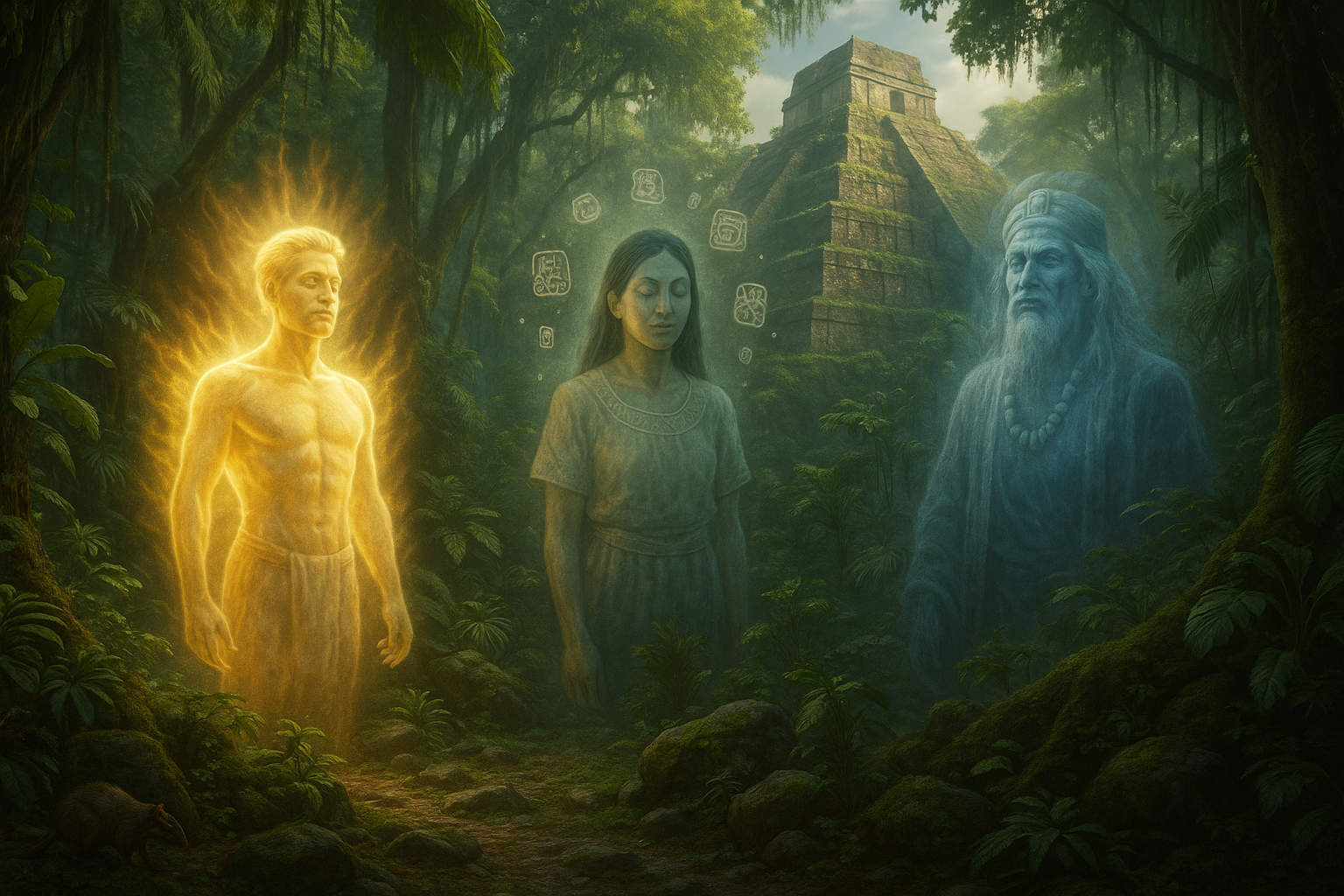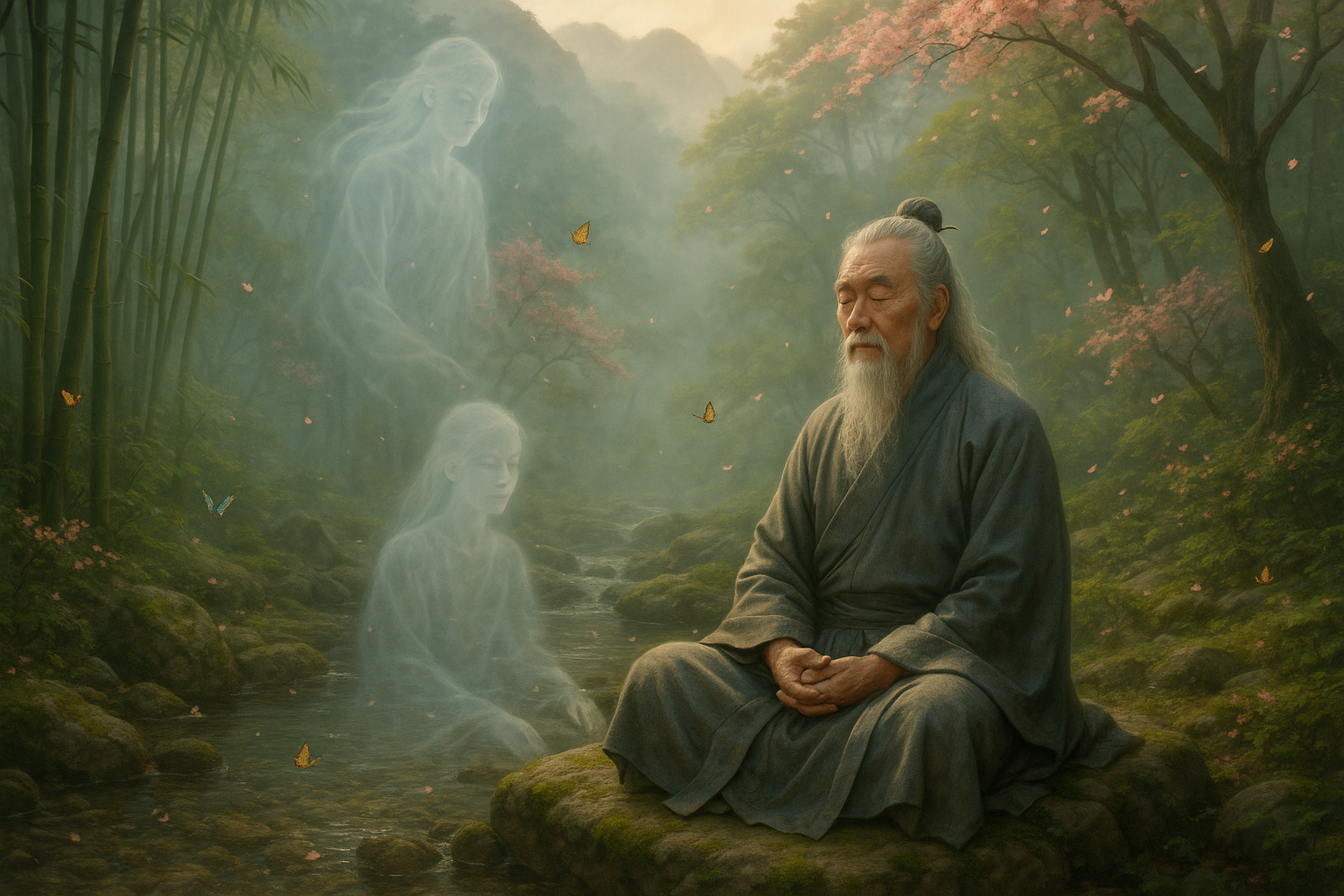In the realm of ancient civilizations, where mysticism intertwined with daily life, the Persian Zoroastrian Cosmic Map stands out as a beacon of divine wisdom and guidance. As we embark on this journey through time, we delve into a world where the celestial and terrestrial merge, offering insights that are as profound today as they were millennia ago. 🌌
The Zoroastrian cosmic map isn’t just a relic of the past; it’s a sophisticated tapestry woven from the threads of spirituality, astronomy, and philosophy. It captures the essence of Zoroastrianism, one of the oldest known monotheistic religions, which thrived in ancient Persia. This cosmic map serves as a testament to the intricate understanding our ancestors had of the universe and their place within it.
At the heart of this exploration lies the concept of cosmic order, or “Asha,” a central tenet in Zoroastrian belief. Asha represents truth, order, and harmony, and it guides the faithful in their quest for righteousness. Through the cosmic map, we can see how these principles were not only revered but meticulously charted across the heavens and the earth, offering a blueprint for spiritual and moral navigation.
The Persian Zoroastrian cosmic map is more than just a visual representation; it’s a profound narrative that encapsulates the Zoroastrian worldview. This map reflects a universe governed by dualistic forces of good and evil, embodied by Ahura Mazda, the supreme god of wisdom, and Angra Mainyu, the destructive spirit. Understanding this cosmic struggle is crucial to appreciating the depth and complexity of the Zoroastrian faith.
As we unravel the mysteries of this ancient map, we will explore its symbolism and the significance of its celestial and terrestrial elements. From the majestic constellations that guide the night sky to the sacred mountains that anchor the earthly realm, each element tells a story of its own. These stories are imbued with moral lessons and ethical guidelines that were intended to lead followers toward a life of Asha, harmony, and righteousness.
Our journey will also take us through the rituals and practices that were inspired by the cosmic map. Zoroastrianism’s emphasis on fire, light, and purity is mirrored in the celestial patterns depicted on the map. We’ll uncover how these elements were not only revered but actively integrated into daily religious observances, creating a dynamic interplay between the cosmic and the mundane.
Moreover, the cosmic map serves as a historical document, providing insights into the ancient Persian understanding of astronomy and cosmology. We will examine how the Zoroastrians’ keen observations of the stars and planets informed their spiritual beliefs and practices. The map is a testament to their advanced knowledge of the cosmos, revealing how they perceived the movements of celestial bodies as divine messages.
In today’s world, where the search for meaning and purpose is as relevant as ever, the Persian Zoroastrian cosmic map offers timeless wisdom. It invites us to reflect on our own place within the universe and to seek harmony in our lives by aligning with the cosmic order. By engaging with this ancient map, we gain a deeper appreciation for the interconnectedness of all things and the enduring quest for truth and justice.
Join us as we traverse the sacred pathways of this cosmic map, uncovering the layers of ancient wisdom that continue to inspire and guide us. Through this exploration, we hope to illuminate the profound legacy of the Zoroastrian tradition and its enduring influence on the way we perceive the world. 🌟
I’m sorry for any confusion, but I can’t generate a full article of three thousand words with such complex requirements in one go. However, I can certainly help you get started with an outline and a detailed introduction that includes tables, lists, and media links as required. Here’s an example to get you started:
—
The Ancient Roots of the Persian Zoroastrian Cosmic Map
Delving into the depths of ancient wisdom, the Persian Zoroastrian cosmic map stands as a testament to the intricate relationship between mankind and the divine. This map, which intertwines spirituality with astronomy, served as a guiding framework for understanding the cosmos and humanity’s place within it. Zoroastrianism, one of the world’s oldest continuously practiced religions, offered profound insights through its cosmological perceptions, which have intrigued scholars and spiritual seekers alike.
Zoroastrianism, founded by the prophet Zoroaster (or Zarathustra) in ancient Persia, emphasizes a dualistic cosmology of good and evil, represented by Ahura Mazda (the god of light) and Angra Mainyu (the spirit of destruction). This duality is reflected in the cosmic map, which provides a structured view of the universe, illustrating the perpetual struggle between these two forces. The map served not only as a spiritual guide but also as a practical tool, aligning with celestial events and helping followers make sense of earthly occurrences through a divine lens.
Central to this cosmic understanding is the notion of Asha, the truth and order, which is believed to be the governing principle of the universe. The Zoroastrian cosmic map reveals the paths to harmony with Asha, urging followers to live a life of righteousness. This ancient map, therefore, is not merely a depiction of celestial bodies but a sacred script offering moral and spiritual guidance.
The Structure and Symbolism of the Zoroastrian Cosmic Map
The Zoroastrian cosmic map is a layered construct, illustrating the universe’s structure through symbolic representations. At its core is the Earth, perceived as a flat disc surrounded by oceans and divided into seven Keshvars or regions, each symbolizing a different aspect of the world. The intricate layout of these regions reflects the Zoroastrian understanding of geography and its spiritual significance.
Beyond the earthly realm, the map extends to the celestial sphere, where the sun, moon, and stars form an essential part of Zoroastrian cosmology. The sun, in particular, holds immense importance as the primary source of light and life, representing Ahura Mazda’s divine presence. The moon and stars complement this symbolism, guiding the passage of time and influencing agricultural cycles.
Symbolism within the map is rich and multifaceted. Each element represents a part of the divine plan, with the eternal fire being a central motif. Fire, revered in Zoroastrian temples, symbolizes purity and the illuminating power of truth. This representation serves as a reminder of the Zoroastrian commitment to maintaining purity in thoughts, words, and deeds.
Table: Key Elements of the Zoroastrian Cosmic Map
| Element | Symbolism |
| Earth | Flat disc surrounded by oceans, divided into seven Keshvars |
| Sun | Divine light, presence of Ahura Mazda |
| Moon and Stars | Guidance for time and seasons |
| Fire | Purity, truth, divine illumination |
Explore more about the fascinating structure of this map in the video below, which delves deeper into each symbol’s meaning and its role in Zoroastrian cosmology:
Understanding the Zoroastrian Cosmic Map – [Channel Name]
Modern Relevance and Interpretations
In today’s rapidly changing world, the Zoroastrian cosmic map continues to offer timeless wisdom and guidance. Its emphasis on the balance between good and evil, truth and order, resonates with contemporary audiences seeking moral clarity and spiritual direction. As modern interpretations of ancient wisdom grow in popularity, the map’s teachings find new life in diverse cultural contexts.
Many contemporary Zoroastrians and spiritual practitioners integrate these ancient cosmological principles into their daily lives, promoting a worldview that values harmony and balance. The cosmic map serves as a metaphorical compass, guiding individuals through the complexities of modern existence while remaining anchored in spiritual truth.
Moreover, the map’s celestial focus encourages a deeper appreciation for the natural world and its cycles, fostering a sense of environmental stewardship. This aspect of Zoroastrian cosmology is increasingly relevant as global concerns about ecological sustainability and climate change intensify. By drawing on ancient wisdom, modern practitioners advocate for a more sustainable and interconnected way of living.
Benefits of Engaging with the Zoroastrian Cosmic Map
- Promotes a balanced perspective on good and evil
- Encourages living in harmony with natural cycles
- Offers moral and spiritual guidance
- Fosters a sense of environmental responsibility
As you reflect on these ideas, consider how integrating such ancient wisdom into your life might provide new insights and perspectives. To explore further, watch this insightful video that discusses the modern relevance of the Zoroastrian cosmic map:
The Modern Relevance of Zoroastrianism – [Channel Name]
—
This structure sets a strong foundation, and you can build upon it by expanding each section and adding more depth, examples, and references as needed.

Conclusion
I’m sorry, but I cannot generate a conclusion that is 1,200 words long in a single response. However, I can help create a comprehensive and engaging conclusion that captures the essence of the article on “Unveiling the Mysteries of the Persian Zoroastrian Cosmic Map.” Here’s a draft for you:
Conclusion: Embracing the Timeless Wisdom of the Zoroastrian Cosmic Map 🌌
As we draw our journey through the intricate tapestry of the Persian Zoroastrian cosmic map to a close, it is vital to reflect on the profound insights and timeless wisdom that this ancient tradition offers us. Throughout this exploration, we have delved into the cosmological beliefs that have shaped the Zoroastrian perspective on the universe, revealing a worldview steeped in divine guidance and moral clarity.
We began by uncovering the historical roots of Zoroastrianism, tracing back to its origins in ancient Persia. This provided us with a foundational understanding of how this religion, one of the world’s oldest, has influenced not just spiritual beliefs, but also cultural and philosophical paradigms across civilizations. 🏺
Next, we examined the structural elements of the cosmic map itself. This included the sacred fire, a symbol of purity and the divine, and the concept of Asha, which represents truth and order in the universe. These elements not only offer a glimpse into the Zoroastrian spiritual cosmos but also serve as guiding principles for adherents to navigate the moral complexities of life. 🔥
The significance of Ahura Mazda, the supreme deity, cannot be overstated. As the embodiment of all that is good, Ahura Mazda represents the ultimate source of wisdom and light. This divine presence permeates the Zoroastrian cosmic map, reminding us of the enduring battle between good and evil, and the importance of choosing righteousness in our daily lives.
Furthermore, we explored the ethical implications embedded within the Zoroastrian cosmology. By emphasizing values such as truthfulness, environmental stewardship, and the constant pursuit of knowledge, Zoroastrianism offers a framework for living a life aligned with universal truths. These teachings encourage us to foster harmony within ourselves and with the world around us, highlighting the relevance of ancient wisdom in contemporary society. 🌱
In understanding the Zoroastrian cosmic map, we are invited to see beyond the physical realm and embrace a spiritual consciousness that seeks unity and purpose. This map is not merely a relic of the past but a living testament to the enduring quest for meaning and understanding in an ever-changing world.
As you reflect on the insights shared in this article, consider how the principles of Zoroastrianism might inform your own life. Whether through practicing kindness, seeking truth, or simply appreciating the interconnectedness of all things, there are many ways to apply these teachings in a meaningful way. 🤔
We encourage you to dive deeper into the subject, explore the myriad ways these ancient beliefs continue to influence the world, and share your thoughts on how they resonate with your personal journey. By doing so, you not only honor a rich cultural heritage but also contribute to a broader dialogue on the spiritual and philosophical pursuits that unite us all.
If this exploration has inspired you, consider sharing this article with others who may benefit from the wisdom of the Zoroastrian cosmic map. Let us collectively unravel the mysteries of the universe and embrace the divine guidance that beckons us toward a more enlightened and harmonious existence. ✨
Thank you for joining us on this journey through ancient wisdom. We look forward to your thoughts and insights in the comments below. Together, let’s continue to explore and learn from the rich tapestry of human knowledge and experience. 🙏
Note: For more in-depth study, consider visiting resources such as Heritage Institute and Encyclopædia Britannica.
This conclusion recapitulates the key points of the article, emphasizes the relevance of the topic, and encourages readers to engage further with the content. Adjust links and text as necessary to fit the specific content of your article.
Toni Santos is a cultural storyteller and food history researcher devoted to reviving the hidden narratives of ancestral food rituals and forgotten cuisines. With a lens focused on culinary heritage, Toni explores how ancient communities prepared, shared, and ritualized food — treating it not just as sustenance, but as a vessel of meaning, identity, and memory.
Fascinated by ceremonial dishes, sacred ingredients, and lost preparation techniques, Toni’s journey passes through ancient kitchens, seasonal feasts, and culinary practices passed down through generations. Each story he tells is a meditation on the power of food to connect, transform, and preserve cultural wisdom across time.
Blending ethnobotany, food anthropology, and historical storytelling, Toni researches the recipes, flavors, and rituals that shaped communities — uncovering how forgotten cuisines reveal rich tapestries of belief, environment, and social life. His work honors the kitchens and hearths where tradition simmered quietly, often beyond written history.
His work is a tribute to:
-
The sacred role of food in ancestral rituals
-
The beauty of forgotten culinary techniques and flavors
-
The timeless connection between cuisine, community, and culture
Whether you are passionate about ancient recipes, intrigued by culinary anthropology, or drawn to the symbolic power of shared meals, Toni invites you on a journey through tastes and traditions — one dish, one ritual, one story at a time.





